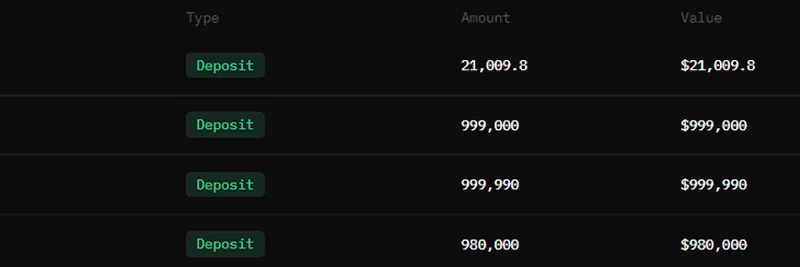Ever wondered why everyday investors can pour money into wild meme coins like Dogecoin or the latest Solana pump, but they're barred from buying shares in groundbreaking companies like SpaceX? That's the head-scratching question kicking off the latest episode of The Chopping Block podcast, featuring Robinhood co-founder and CEO Vlad Tenev. In this conversation, hosted by industry heavyweights Haseeb Qureshi, Robert Leshner, Tarun Chitra, and Tom Schmidt, Vlad breaks down the quirks of traditional finance and how crypto is shaking things up.
The episode, streamed via Unchained, dives deep into the intersection of fintech and blockchain. It's a must-listen for anyone in the meme token space, as it highlights how memes represent the ultimate in retail accessibility—while pointing out the barriers elsewhere. Let's unpack the key highlights from the timestamps provided.
Layer 2 vs. Layer 1 Trade-Offs
Starting at 01:52, the discussion explores the pros and cons of Layer 1 (L1) blockchains like Ethereum versus Layer 2 (L2) solutions built on top of them, such as Optimism or Arbitrum. For the uninitiated, L1 is the base layer where all transactions are settled, but it can get congested and expensive. L2s aim to fix that by handling transactions off-chain and batching them back to L1 for security.
Vlad likely shares Robinhood's perspective on integrating these for their crypto offerings. In the meme world, where tokens often launch on fast, cheap chains like Solana (an L1), this trade-off matters because high fees can kill the fun of trading low-value memes. The key takeaway? L2s could make meme trading even more seamless and affordable for retail users.
Tokenized Stocks on Robinhood Chain
At 04:19, things get exciting with talk of tokenized stocks on a potential "Robinhood Chain." Tokenization means representing real-world assets, like stocks or real estate, as digital tokens on a blockchain. Imagine trading Apple shares 24/7, just like you do with meme coins.
This could be a game-changer for meme enthusiasts, blending the hype of crypto with traditional assets. Vlad might discuss how Robinhood is eyeing this to expand beyond stocks and crypto, potentially creating a unified platform where memes and blue-chip investments coexist.
Private Markets Onchain
From 07:56, the crew delves into bringing private markets onto the blockchain. Private investments, like venture rounds in startups (think SpaceX), are typically reserved for accredited investors—folks with high net worth or income. But as Vlad points out, retail can already gamble on memes with zero barriers.
Onchain private markets could democratize this, using smart contracts to handle compliance and fractional ownership. For blockchain practitioners, this means more liquidity for illiquid assets, similar to how meme tokens trade freely. It's a nod to how crypto's permissionless nature could reform outdated regs.
Accreditation Reform & Compliance
Kicking in at 16:10, this section tackles the need for accreditation reform. Accreditation is the SEC's way of "protecting" retail from risky investments, but it's ironic when anyone can YOLO into a meme coin that might rug pull overnight.
Vlad, drawing from Robinhood's experience during the 2021 meme stock frenzy (remember GameStop?), argues for updated rules. Simpler compliance via blockchain could open doors, letting retail access high-growth privates without the red tape. This resonates big in meme circles, where community-driven value creation mirrors early-stage investing.
24/7 Trading for Equities
At 21:47, the talk shifts to round-the-clock trading for stocks, mirroring crypto's always-on market. Traditional exchanges close, but memes never sleep—pumps happen at 3 AM UTC.
Robinhood has pushed for this, and Vlad explains the tech and regulatory hurdles. For meme token traders, this blurs the line between TradFi and DeFi, potentially bringing more liquidity and volatility to all assets.
Public vs. Private Boundary
Starting 31:05, they blur the lines between public and private markets. As companies stay private longer (like SpaceX), retail misses out on growth. Blockchain could tokenize these boundaries, allowing seamless transitions.
In meme terms, it's like turning a private presale into a public fair launch—more inclusive, more chaotic, more opportunity.
Digital Asset Treasuries (DATs)
At 35:27, Digital Asset Treasuries come up. DATs involve companies holding crypto on their balance sheets, like MicroStrategy with Bitcoin. Vlad might touch on Robinhood's stance, especially with their crypto arm.
For meme insiders, this validates holding volatile assets, as even corporates see value in digital treasuries over fiat.
Robinhood’s Business Mix
From 37:50, Vlad outlines Robinhood's evolution from stocks to crypto. With meme stocks birthing the platform's fame, integrating crypto (including memes) is natural. He discusses the revenue mix and future bets.
Retail to Institutions: Global Expansion
At 41:38, the focus is on scaling from retail to institutions and going global. Robinhood's EU crypto launch is mentioned, opening meme trading to new audiences.
Harmonic AI & Lean Proofs
Diving into tech at 46:44, Harmonic AI and lean proofs—likely AI tools for verifying smart contracts efficiently. This could reduce risks in meme launches, where buggy contracts lead to exploits.
Safer Smart Contracts Beyond Manual Audits
Wrapping up at 54:48, they advocate for automated safety in smart contracts, moving past human audits. Crucial for meme tokens, where speed trumps security, leading to frequent rugs.
This episode is a treasure trove for anyone tracking meme tokens' role in broader finance. Vlad's insights underscore crypto's disruptive power, especially in making investing fairer. If you're into blockchain, catch the full ep on YouTube, Spotify, or Apple Podcasts. What do you think—should retail get SpaceX access like they do memes? Drop your thoughts below!


